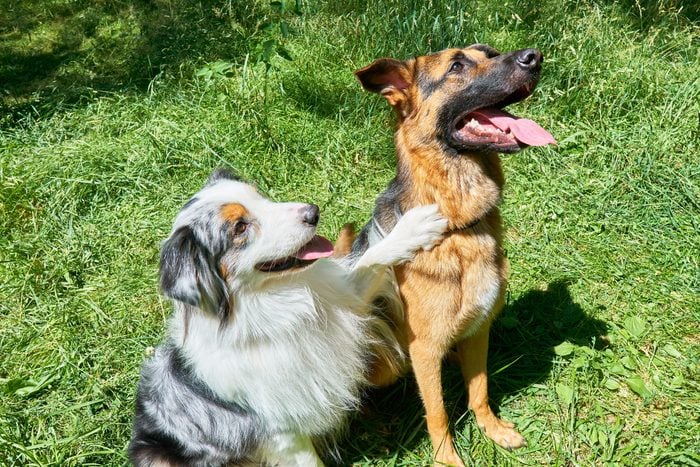
Facts about dogs you never knew
Why, among all the animals on earth, do dogs hold such a special place for us? They’ve been our friends for thousands of years, serving as companions, sentries, warriors, ratters, hunters and lifesavers, and they come in all shapes, sizes and personalities. They are also endlessly fascinating, as any list detailing facts about dogs will prove. And that fascination causes many people, myself included, to devote their lives to a totally different species than their own.
Like most dog lovers, I started out loving dogs because they were cuddly, cute and fun. Then I decided that to really understand them, I needed to learn why dogs behave in certain ways, how they perceive the world and how their genes influence them. I eventually accumulated a houseful of my favorite breed (salukis, in case you were wondering), earned a PhD studying dog senses, and wrote hundreds of articles and 30-plus books about dogs—along the way, storing away loads of random facts about them.
To say that we know everything about dogs would be as ludicrous as to say we know everything about humans. But here, from my 50-plus years of fascination, are 30 facts that will make you appreciate dogs even more and maybe even interact with yours a little differently.
Get Reader’s Digest’s Read Up newsletter for more pets, humor, cleaning, travel, tech and fun facts all week long.

1. Dogs were the first animals domesticated by humans
Fossil evidence indicates that dogs were domesticated around 23,000 years ago and were the only animals domesticated during the Pleistocene Epoch (aka the Ice Age), but DNA evidence places the date even further back. In 2021, a literature review published in PNAS concluded that domestication began in Siberia up to 26,000 years ago. These dogs were derived from a now-extinct species of wolf and migrated around the globe along with their humans. Some of the oldest-known breeds are the Arctic spitz breeds, Middle Eastern sighthounds and several Chinese dog breeds.
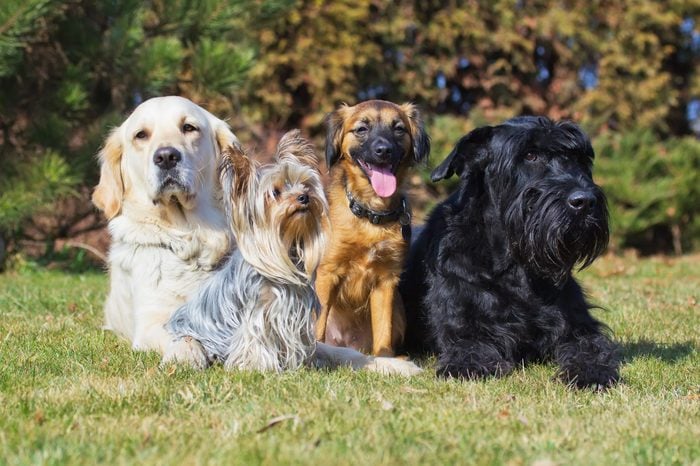
2. Dogs are the most diverse mammals on earth
They range in size from tiny Chihuahuas to gargantuan Great Danes, and they come in a huge variety of body types, coat types, coat colors, ear types and even behaviors. But scientists have discovered their diversity is due to a fairly small number of genes that make huge differences in their looks. For example, 90% of all dog coat types are determined by just three genes: long vs. short hair; furnished (facial hair) vs. non-furnished hair; and straight vs. curly hair. Similarly, surprisingly few genes also control how big a dog is, how long its nose is and how its ears are shaped, among other traits.
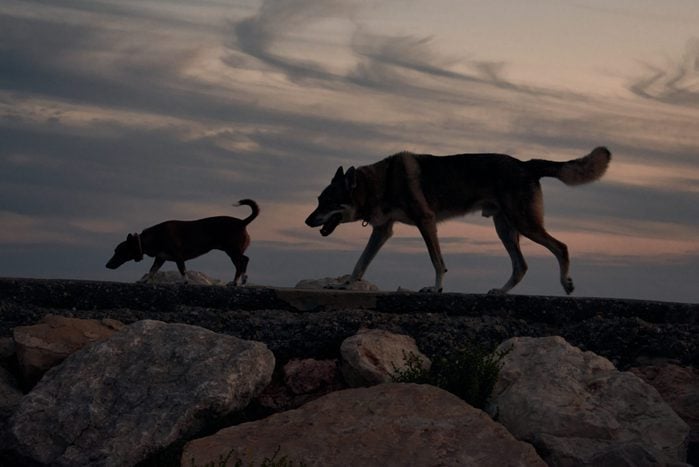
3. Dogs’ eyes are designed to see in the dark
It’s a little complicated, but here’s the CliffsNotes version of why dogs have excellent night vision:
- Both dogs’ corneas and lenses are more rounded than ours are, which gives them better light collection.
- Their pupils can open wider than ours to let in more light.
- Their retinas (the light-sensitive layer at the back of the eye) are made up mostly of rod cells, which use low light, whereas ours have areas of pure cones, which use bright light.
- And finally, dogs have a layer over their retinas called a tapetum, which reflects light that got past the retina back through the retina from behind. This gives light a second chance at being detected. People don’t have that.

4. About 28,000 dogs compete at the world’s largest dog show every year
That’s a far cry from the first dog show in the world, held in Newcastle-on-Tyne in England in 1859. It attracted 60 entries, all pointers and setters. These days, the largest dog show in the world is Crufts, also in England, and it’s been held since 1891. An estimated 28,000 dogs compete there each year, and it attracts more than 200,000 spectators. That’s a lot of dogs and dog lovers!

5. Dogs can sniff which way you’re walking in five steps
They can tell which way a human scent trail is headed, even if they come across it at right angles—and even if the person walks backward. And studies show their sense of smell is so sensitive that they can tell the difference in scent intensity within just five footsteps (but not three) of the track layer.
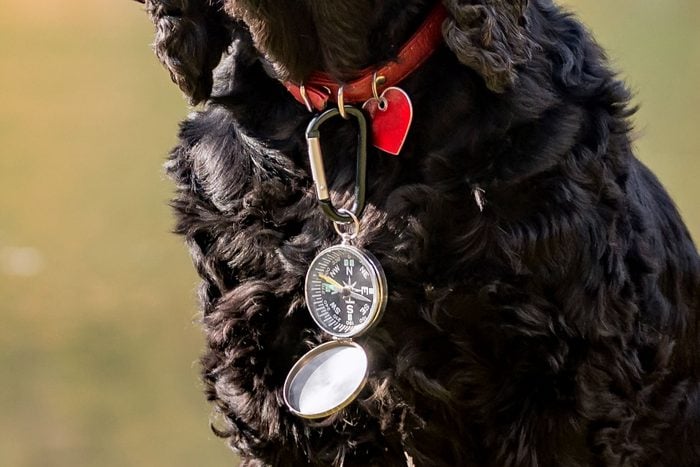
6. Dogs can sense the Earth’s magnetic field
In 2020, Czech researchers studied dogs that could find their way back from a hunting excursion using a novel route with a shortcut. They found that the dogs were able to do this by aligning themselves with the Earth’s magnetic field, which acts as a natural GPS of sorts for them. Other research suggests they also align themselves with the Earth’s magnetic field to poop, which is one of the reasons they circle to find just the right spot.
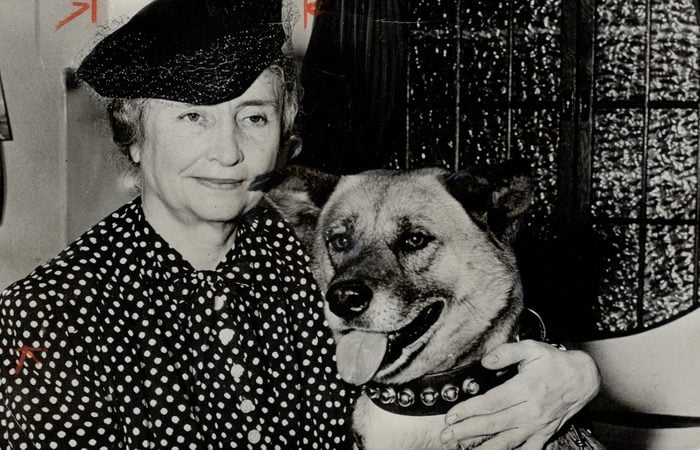
7. Several celebrities helped establish dog breeds in America
Zeppo Marx, of the Marx Brothers, brought some of the first Afghan hounds to America from England in 1931. Helen Keller brought the first Akita to the United States from Japan in 1937. And burlesque entertainer Gypsy Rose Lee bred and promoted Chinese crested dogs (you know, the naked ones) starting in the 1950s after her sister found two of these hairless dogs in a shelter. As the story goes, she showed them to Gypsy, who thought it was a perfect match! Nobody knows exactly to what extent having celebrity owners had on these breeds’ popularity, but it almost certainly helped.

8. Dogs have fewer, and different, taste buds than we do
Several things taste different to them. For example, most artificial sweeteners taste bitter, not sweet, which is why your dog rejects them. But there’s one artificial sweetener they may like—and it’s a dangerous one for them. Xylitol (also called birch sugar) is used in many sugarless gums, candies and medicines, and it causes a sudden drastic drop in blood sugar in dogs, which can lead to liver damage and even death.
An added warning about this dog fact: Be on high alert when you have guests over. Xylitol ingestion often occurs when visitors leave candy or gum in their purse—and then leave the purse in a place where a dog can steal it. This is one case where it’s not impolite to tell your guests to leave their candy in the car.

9. Dogs were some of the first action heroes in movies
Rin Tin Tin was called “the dog who saved Hollywood” because his films rescued the struggling Warner Bros. studio from bankruptcy. American soldiers found “Rinty” as a puppy in a foxhole in France and brought him back to the United Sates, where his stunts made him a bona fide animal action hero.
But he wasn’t the first: A decade earlier, another German shepherd named Strongheart was a big-screen idol. And before that, border collies were the early stars. In fact, the first dog to appear in a movie was a border collie named Jean, who starred in the silent 1910 hit Jean Goes Foraging. Other major dog stars have since included Lassie, Benji and Marley—and Toto too!—but only Lassie and Rin Tin Tin have stars on the Hollywood Walk of Fame.
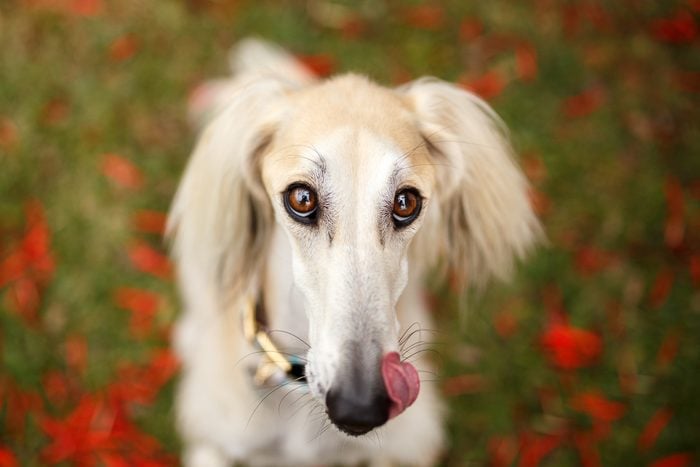
10. A dog’s whiskers are important sensory organs
Technically called vibrissae, a dog’s whiskers aren’t just for show—they help a dog sense its surroundings, maintain balance and even use air currents to determine how far people or animals are from them. Anecdotal reports abound that dogs with shaved whiskers tend to get more cuts on their faces due to their absence and have an impaired sense of balance after their whiskers are cut off. However, even though whiskers are classified as sensory organs, they are often clipped during grooming. In some countries, it is actually illegal to cut off a dog’s vibrissae.
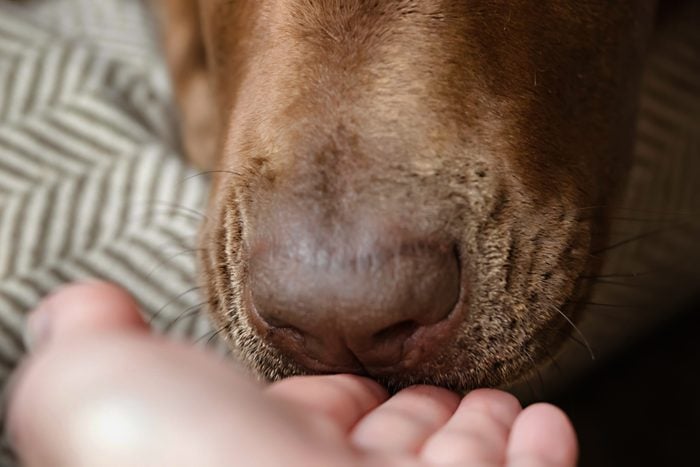
11. Dogs can smell fear—sort of
They can smell stress, so in a way, they can also smell fear. According to one study, dogs could tell the difference between cloths wiped on people under stress vs. cloths wiped on calm people. How, exactly? The researchers trained the dogs to react to a sample obtained from a stressed person (forced to do mental arithmetic!). Then they took samples from the same person when they weren’t stressed, and tested to the dogs to see if they could still identify just the stress sample—and they did.
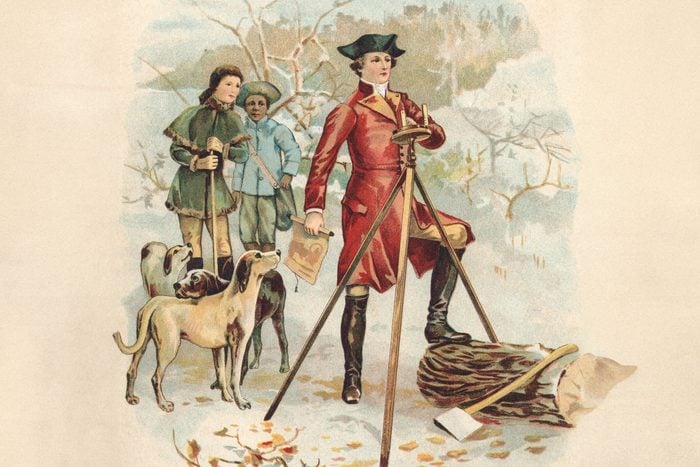
12. George Washington bred his own dogs
He’s not just the father of our country—he’s also considered the “father of the American foxhound.” A devoted fox hunter, Washington created a faster version of the English foxhound by mating several other hunting breeds, including some hounds that the Marquis de Lafayette gave him. In fact, the American foxhound was one of the first breeds recognized by the American Kennel Club (AKC), in 1886.
And those aren’t the only facts about dogs and our first president you should know: Washington also kept dogs of many other breeds, including Italian greyhounds, Briards, mastiffs, terriers, Dalmatians and Newfoundlands, at his Mount Vernon home.
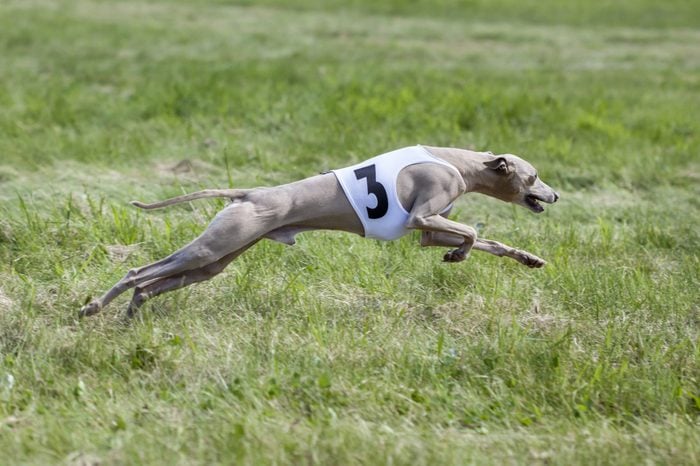
13. The world’s fastest dog, the greyhound, is literally built for speed
They’re fast for several reasons:
- They use a stride called the double-suspension gallop, in which all four feet are off the ground together twice during one stride—once when fully stretched out (think the Greyhound bus logo) and once when fully tucked under.
- The greyhound’s heart is much bigger than other dogs’ hearts.
- Greyhounds have more red blood cells than other dogs (35% to 50% for most dogs vs. 45% to 60% for greyhounds).
- Greyhounds also have more fast-twitch muscles in their body compared to other dogs.
Mix all of this together, and you have a recipe for a dog that can sprint up to a whopping 45 mph!
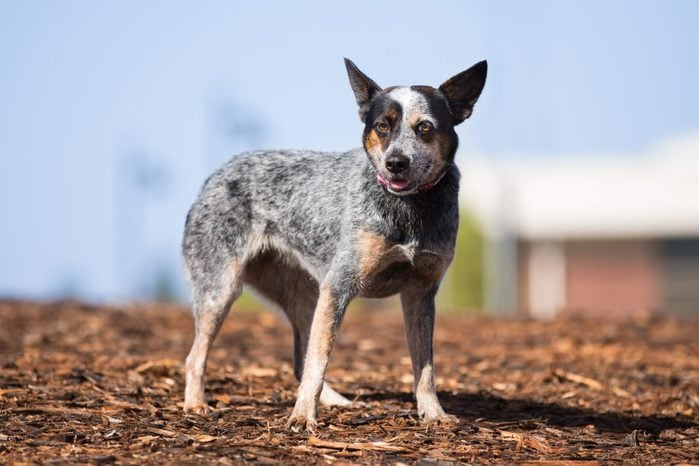
14. The oldest dog on record lived to be more than 29 years old
He was an Australian cattle dog named Bluey, and he worked cattle and sheep from the time he was obtained as a pup in 1910 until he took an early retirement at the age of 20. He lived until 1939, when he was put to sleep at 29 years and 5 months of age. Another dog recently claimed the record of the longest-living dog—Bobi, a Rafeiro do Alentejo from Portugal—but he was stripped of that title when his age (an alleged 31 years and 165 days) couldn’t be proven.

15. The heaviest dog on record weighed 343 pounds
That was Zorba, an Old English mastiff who lived in London in the 1980s. This giant dog also held the record for longest dog, measuring 8 feet 3 inches from nose to tail, and stood 37 inches at the shoulder. But he wasn’t the tallest dog. That title goes to Gibson, a Great Dane from California who earned that designation from Guinness World Records in 2004 and measured 42.2 inches at the shoulder. What were those owners’ food bills?!

16. The smallest recorded dog is a Chihuahua
In terms of length from nose to tail tip, a Chihuahua named Pearl from Orlando, Florida, measures a mere 5.9 inches. In terms of height, this tiny dog also holds the record at 3.59 inches at the shoulder. She weighs 1.22 pounds, a tad more than another Chihuahua, Dancer, who weighed 18 ounces. That’s like a double cheeseburger!

17. The record for the most puppies in a single litter is an astounding 24
They were delivered by C-section to a Mastiff named Tia. (Sadly, one of the puppies was stillborn and three additional pups died in the first week, but the other 20 were healthy.) The record for a natural birth is 21, from a Great Dane mix named Mary Jane. Ouch x 21.

18. The rare Norwegian Lundehund is very unusual
It has at least six toes on each foot and is so limber that it can spread its front legs all the way to either side as well as touch the back of its head to its back. It also had one of the most unusual jobs: climbing cliffs and crawling into tunnels to catch puffins on the isolated island of Vaeroy. While they were employed for this purpose at least since the 1500s, repeated disasters decimated the Norwegian Lundehund population, and they almost became extinct. After World War II, there were only two left. And in the 1960s, after a breeding effort, a distemper outbreak cut back their numbers again.
A current project is trying to cross related breeds to deepen their gene pool. As of 2022, there were only about 1,200 Lundehunds in the world, most of them in Norway.
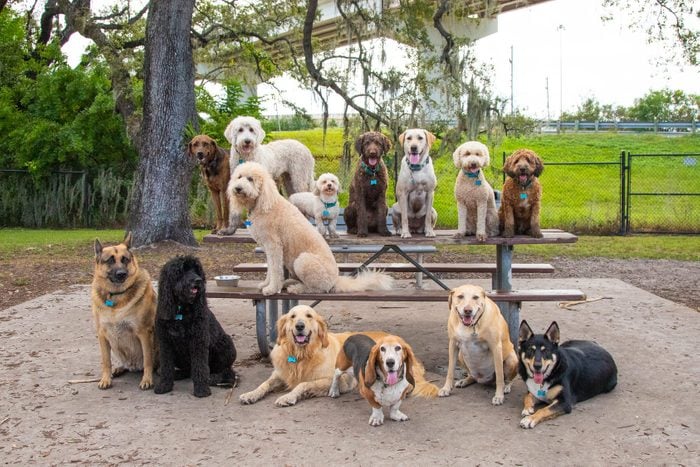
19. There may be more than 1,000 dog breeds in the world
The American Kennel Club recognizes 201 breeds, but that’s just a fraction of the number of breeds in the world. So how many dog breeds are there? Other major kennel associations recognize as many as 400, and estimates for total numbers range from 800 to 1,000 and up—but nobody knows for sure. And, of course, that doesn’t include the mixed breeds, which aren’t considered breeds in their own right.

20. Certain breeds tend to win more at dog shows
These facts about dogs may help you win your next trivia night: The wire fox terrier has dominated the Westminster Kennel Club dog show, winning 15 Best in Show awards throughout the show’s 116 years. Next in line is the Scottish terrier with eight, the English springer spaniel with six, and the Pekingese and poodle tied with five. The youngest winner was a 9-month-old rough collie in 1929, and the oldest was a 10-year-old Sussex spaniel in 2009. The top-winning AKC Best in Show winner of all time was a German shepherd named Mystique, who won more than 200 of them!
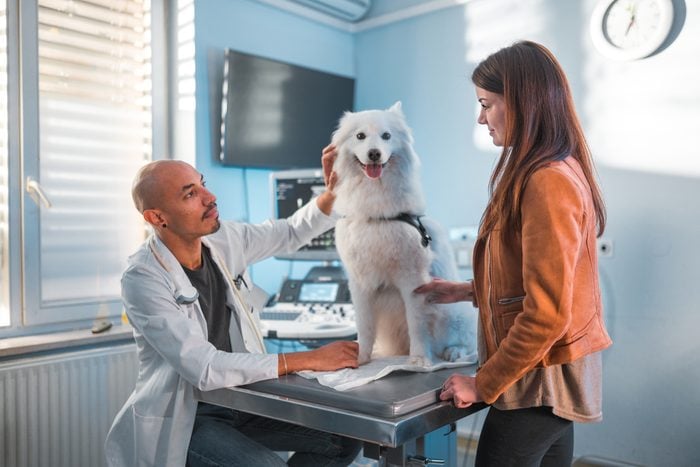
21. DNA tests exist for more than 200 hereditary diseases in dogs
Don’t worry—a particular breed generally carries only one or two of these diseases. Responsible breeders can now test their dogs, and if they are carriers, they’ll make sure those dogs are bred only to non-carriers so that no affected dogs can be born. Many diseases, especially those caused by the combination of many different genes, don’t have DNA tests yet, but researchers are working hard to develop them. The Orthopedic Foundation for Animals lists desired tests for each breed.

22. Some body types are associated with certain disorders
While some disorders occur more in certain breeds because their founding dogs carried the genes for them, others occur more often simply because certain body types are more likely to have certain problems, whether the dogs are purebred or mixed. For example, large long-boned dogs are more likely to have bone cancer; large deep-chested ones, bloat/gastric torsion; heavy dogs, hip dysplasia; very small dogs, patellar luxation (kneecap dislocation); and short-faced dogs, breathing problems. And did you know that short-legged dogs like dachshunds have back problems not because their backs are so long but because their legs are so short? Some genes that cause dwarfism also cause a dog’s spinal discs to be more brittle and prone to injury.
Knowing these facts about dogs can help you determine which breed is right for you and prepare for possible expenses down the road. You may also want to read about the healthiest dog breeds before making your decision.

23. The world’s richest dogs are very, very rich
But it turns out that stories of two of them—a German shepherd named Gunther, who allegedly inherited $400 million, and a poodle named Toby Rimes, who was said to be worth $92 million—were probably hoaxes. On the other hand, Leona Helmsley’s dog Trouble inherited $12 million (after Helmsley disinherited two of her human children), although a judge reduced it to $2 million. Oprah Winfrey’s dogs will reportedly inherit $30 million upon her passing. And internet star Jiffpom may be the current richest dog to earn his own money. Some sources put it at $56 million!

24. Certain people foods are toxic for dogs
The artificial sweetener Xylitol tops the list, as small amounts can cause death. But chocolate is also deadly—the darker it is, the worse, although a little bit is not going to send your big dog to the vet. The same is true about onions and, to a lesser extent, garlic. Both can cause red blood cells to burst, and this can kill a dog if it eats enough of these foods. Unless it’s a tiny dog, a slice won’t hurt, but a whole onion could be fatal. Why can’t dogs eat these foods when we can? It has to do with how dog and human livers metabolize certain foods differently.

25. The world’s smartest dog knew the names of more than 1,000 objects
A border collie named Chaser could identify and retrieve 1,022 toys by name. She had the largest tested memory of any non-human animal. Certain breeds, mostly those bred to herd, tend to be smarter than others—or, at least, learn words and tasks more easily. Overall, it is thought that the average dog is as smart as the average 2-year-old toddler.
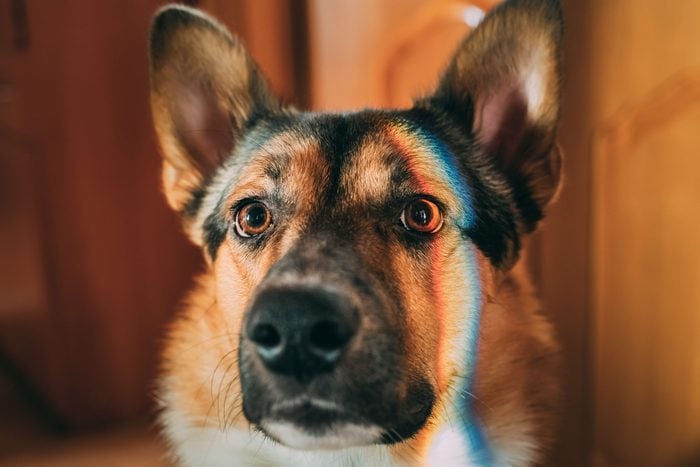
26. Dogs can see colors—just not like we can
Human color vision relies on having three different types of cone receptors in our retina: red, green and blue. Human males with the most common type of colorblindness lack the green cone type, and dogs also lack the green cone. Plus, dogs have fewer cones altogether. So dogs, like most colorblind males, can confuse reds and greens, especially because their colors are not as vivid overall. If you want to make sure a color stands out to your pup, choose blue or yellow.
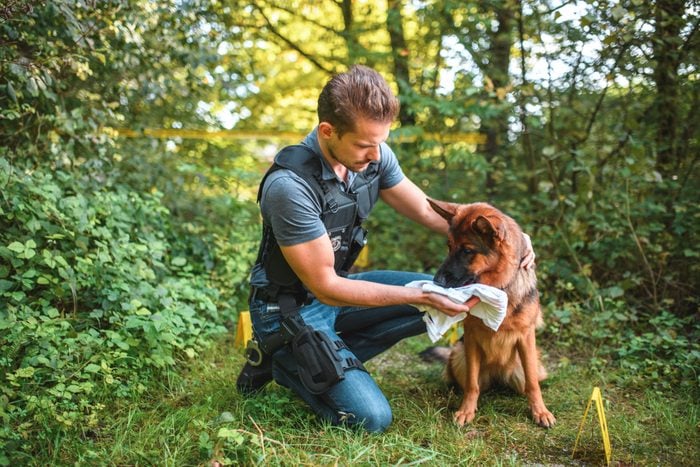
27. You can’t escape a tracking dog, but you can slow it down
When dogs track, they follow both the scent of crushed vegetation and the odors that fall from the person’s body. You can’t escape a tracking dog by backtracking (they can tell which direction you’re going), climbing from tree to tree (your scent particles still fall to the ground), masking it with other heavy scents (they can still detect yours, even when overwhelmed by other smells), going through water (your scent floats in the water and sticks to the shoreline), or walking on hard surfaces. That said, each of these maneuvers will probably slow down the tracking dog (and its handler), so that may help you make an escape if you can do them fast enough. That said, maybe stay out of trouble so you won’t need to use this fact about dogs in quite this way!
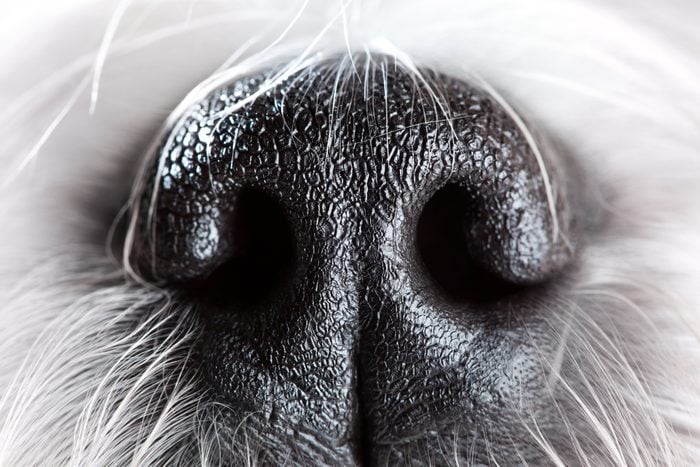
28. A dog’s nose print is as unique as a person’s fingerprint
Or at least that’s what’s assumed, based on a small study done many years ago, as well as extrapolating from data on cattle nose prints. Regardless, the Canadian Kennel Club has used nose prints for identification starting in 1938 (though more recently, it has started relying on microchips). And a recent study of 70 dogs indicated that nose prints are unique and established in early puppyhood.

29. The most popular dog breed changes with the times
The French bulldog has just begun its second year as the AKC’s most popular dog breed. Before that, it was the Labrador retriever, which reigned supreme for a record-setting 31 straight years. Before that, the cocker spaniel held the title from 1983 to 1990. And before that, the poodle (1962–1982), the beagle (1954–1959) and the cocker spaniel again (1936–1953). Even earlier, the Boston terrier was No. 1 from the mid-1910s through 1925, when the German shepherd dog took over, until Bostons inched ahead again until 1935. In the 1900s, it was the collie, and in the 1890s, the Saint Bernard. So which breed has the distinction of being the AKC’s first popular breed? That would be the English setter in the 1880s.
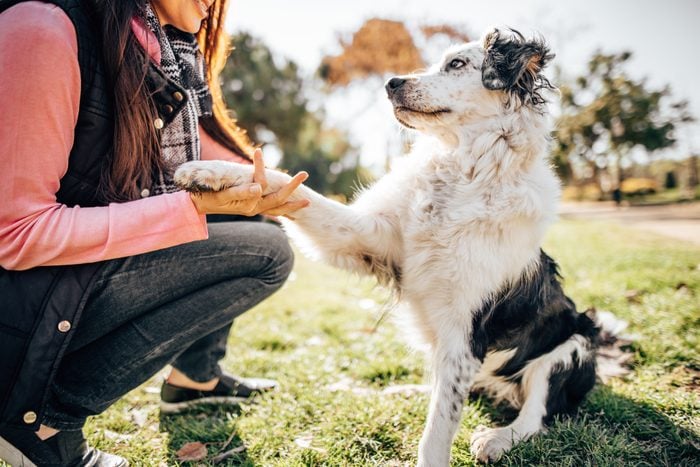
30. More dogs are right-pawed
But the preference is pretty subtle, and it seems to depend on the task—and the sex of the dog. In a study of almost 18,000 dogs, 60.7% of female dogs and 56.1% of male dogs preferred using their front right paw to get at food from a tube. That said, it’s not a dramatic preference like you’d see in people, and researchers debate whether this dog fact has any predictive value about behavior.
Why trust us
At Reader’s Digest, we’re committed to producing high-quality content by writers with expertise and experience in their field in consultation with relevant, qualified experts. For this piece, Caroline Coile, PhD, tapped her experience as an award-winning journalist specializing in canine breeds, health and science. We verify all facts and data, back them with credible sourcing and revisit them over time to ensure they remain accurate and up to date. Read more about our team, our contributors and our editorial policies.
